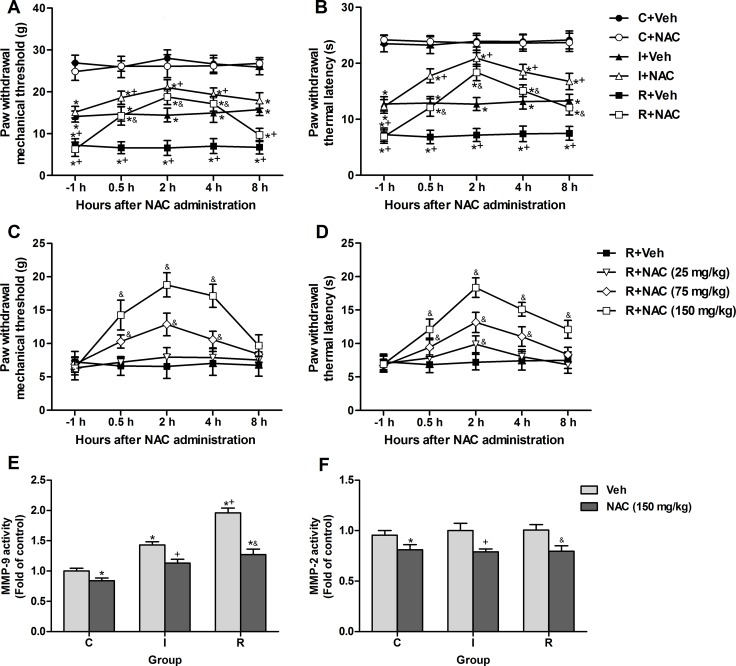Figure 3. Single intraperitoneal injection of NAC at 24 h after surgery attenuated intraoperative remifentanil-induced hyperalgesia and suppressed the remifentanil-induced activation of MMP-9.
(A and B) NAC (150 mg/kg, i.p.) significantly attenuated mechanical allodynia and thermal hyperalgesia after incision with or without remifentanil infusion (n = 8). (C and D) Effects of various doses of NAC (25, 75, 150 mg/kg, i.p.) on remifentanil-induced mechanical allodynia and thermal hyperalgesia (n = 8). (E and F) The activity of MMP-9 and MMP-2 was inhibited in ipsilateral lumbar DRGs of all groups at 2 h after NAC injection (n = 5). Values expressed as mean ± SD. C+Veh: Vehicle (0.9% saline, 1 ml) was injected intraperitoneally in control rats; C+NAC: NAC was injected intraperitoneally in control rats; I+Veh: Vehicle was injected intraperitoneally in incisional rats; I+NAC: NAC was injected intraperitoneally in incisional rats; R+Veh: Vehicle was injected intraperitoneally in incisional rats infused with intraoperative remifentanil; R+NAC: NAC was injected intraperitoneally in incisional rats infused with intraoperative remifentanil. Significant difference in pain behaviors was revealed after Repeated measures ANOVA, and significant difference in the results of Colorimetric quantitative detection was revealed after One-way ANOVA (*P < 0.05 compared with group C+Veh, +P < 0.05 compared with group I+Veh, &P < 0.05 compared with group R+Veh, Bonferroni post hoc tests).

